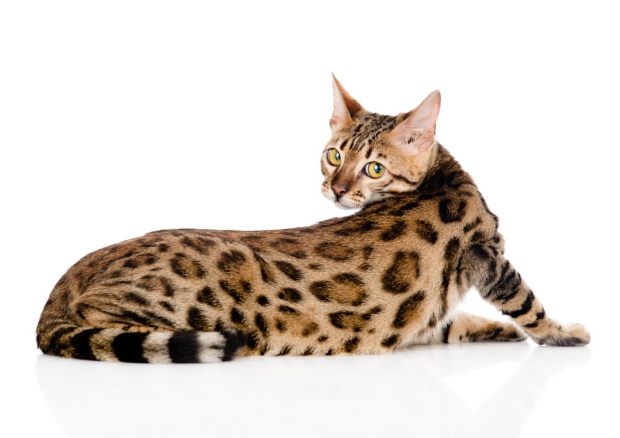


Scientists analyzed a large number of Bengal cats to trace the genetic roots of their distinctive leopard-like markings, ultimately determining that these markings are primarily derived from domestic felines.

Researchers have recently found that the distinct spotted coats of Bengal cats are actually a result of domestic cat genes, rather than genes from wild Asian leopard cats. Bengal cats are known for their striking appearance, resembling sleek jungle cats with marbled and spotted coats. Through a collaboration with Bengal cat breeders, Stanford Medicine researchers uncovered that the iridescent sheen and leopard-like patterns in Bengal cats can be linked to genes found in domestic cats that were selectively bred with wild cats.
According to Gregory Barsh, an emeritus professor of genetics, the unique appearance of Bengal cats was always present in domestic cats, but it was through selective breeding that these genetic traits were brought to the forefront. In a study published in Current Biology, researchers analyzed genes from almost 1,000 Bengal cats over a 15-year period. Barsh and his team found that understanding the genetics behind the Bengal cat’s coat could provide insights into how genes work together to create colors, patterns, and physical features.
By studying cats and other animals, researchers like Barsh and lead author Christopher Kaelin, PhD, aim to unravel the genetic basis of physical traits. Their past research has identified genes responsible for coat color variations in tabby cats and unique markings in Abyssinian cats.

Gregory Barsh discussed the significance of genetic variation in relation to appearance in various species, highlighting cats as a promising avenue for study. Breeders, led by Jean Mills in the 1960s to 1980s, crossed Asian leopard cats with domestic cats to create Bengal cats with distinct features. Barsh and Kaelin saw Bengal cats as an ideal subject due to their recent genetic origin and unique appearance. They collected samples and data from Bengal cats to investigate the genetic basis of their colors and patterns. Surprisingly, sequencing 947 Bengal cat genomes revealed that their distinct appearance was not derived from leopard cats, but from variations in domestic cat genes. The research also uncovered the genetic mutation responsible for the glittering fur found in many Bengal cats, revealing insights into how gene variations can subtly impact appearance.

In a recent study, researchers Barsh and Kaelin investigated the genetic makeup of rare “charcoal” Bengals, a subset of the breed known for their darker coloring. They discovered that a leopard cat gene called Asip was responsible for the charcoal color, but only when combined with domestic cat genes. Interestingly, this gene didn’t function the same way in leopard cats as it did in domestic cats due to genomic incompatibility.
Barsh highlighted that hybridization between different species, such as the wild leopard cat and domestic cat, could result in unique genetic combinations. This phenomenon is similar to the small amount of Neandertal DNA found in human genomes. The researchers’ work has not only shed light on Bengal cat genetics but has also influenced how breeders can create new colors and patterns through selective breeding.
Kaelin emphasized that breeders have shown great interest in the research findings, with many actively contributing DNA samples and collaborating on data analysis. The study has showcased the power of citizen science and how collaboration between researchers and breeders can benefit both parties. The researchers also noted that the diversity needed to create unique cat coats was already present in domestic cat genomes, challenging the common belief that distantly related animals are required for breeding designer animals.
Collaborators on the study included scientists from the HudsonAlpha Institute of Biotechnology, Gencove Inc., University of Bern, and Texas A&M University. The research was funded by the HudsonAlpha Institute for Biotechnology and the National Institutes of Health (grant AR082708).

